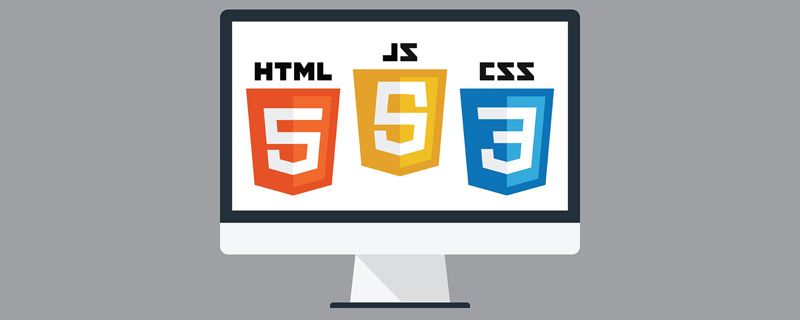 Web Front-end
Web Front-end JS Tutorial
JS Tutorial A complete collection of applications and techniques for JS pop-up windows
A complete collection of applications and techniques for JS pop-up windowsThis article introduces the use of JS pop-up windows in detail, which is of great practical value. Let’s take a look at it in detail.
//Close, the parent window will pop up a dialog box, and the child window will be closed directly
this.Response.Write("<script language=javascript>window.close();</script>");
//Close, the parent window and the child window will not pop up a dialog box, and will be closed directly
this.Response.Write("<script>");
this.Response.Write("{top.opener =null;top.close();}");
this.Response.Write("</script>");
//Pop up The window refreshes the current page width=200 height=200 menu. There are no menu bar, toolbar, address bar, and status bar
this.Response.Write("<script language=javascript>window.open('rows.aspx','newwindow','width=200,height=200')</script>");
//The pop-up window refreshes the current page
this.Response.Write("<script language=javascript>window.open('rows.aspx')</script>");
this.Response.Write("<script>window.open('WebForm2.aspx','_blank');</script>");
//The pop-up prompt window jumps to the webform2.aspx page (in an IE window Medium)
this.Response.Write(" <script language=javascript>alert('注册成功');window.window.location.href='WebForm2.aspx';</script> ");
//Close the current child window and refresh the parent window
this.Response.Write("<script>window.opener.location.href=window.opener.location.href;window.close();</script>");
this.Response.Write("<script>window.opener.location.replace(window.opener.document.referrer);window.close();</script>");
//The child window refreshes the parent window
this.Response.Write("<script>window.opener.location.href=window.opener.location.href;</script>");
this.Response.Write("<script>window.opener.location.href='WebForm1.aspx';</script>");
//A pop-up prompt window pops up after confirmation. Window (WebForm2.aspx)
this.Response.Write("<script language='javascript'>alert('发表成功!');window.open('WebForm2.aspx')</script>");
//The prompt window pops up, after confirmation, refresh the parent window
this.Response.Write("<script>alert('发表成功!');window.opener.location.href=window.opener.location.href;</script>");
//The same page pops up
<INPUT type="button" value="Button" onclick="javascript:window.open(window.location.href)">
Response.Write("parent.mainFrameBottom.location.href='yourwebform.aspx?temp=" +str+"';");
<SCRIPT LANGUAGE="javascript"> <!-- window.open ('page.html', 'newwindow', 'height=100, width=400, top=0, left=0, toolbar=no, menubar=no, scrollbars=no, resizable=no,location=n o, status=no') //这句要写成一行 --> </SCRIPT>
Parameters Explanation:
End of js script
'newwin': Hide menu bar address bar toolbar
width=50: Width
height=50: Height
scrollbars=yes/no: Scroll bar
top=50: Window distance Top of the screen
left=50: The distance between the window and the left side of the screen
Example:
window.open('detail.aspx?ID="+e.Item.Cells[1].Text+"','newwin','width=750,height=600,scrollbars=yes,top=50,left=50');");
this.Response.Write("<Script>window.open('WebForm2.aspx','','toolbar=no,location=no,directories=no,status=no,menubar=no,scrollbars=no,resizable=yes,width=750,height=470,left=80,top=40');</script>");
Example:
this.Response.Write("<script>alert('发表成功!');window.opener.location.href=window.opener.location.href;</script>");
this.Response.Write("<script>");
this.Response.Write("{top.opener =null;top.close();}");
this.Response.Write("</script>");
Example:
linkcolumn1.DataNavigateUrlFormatString="javascript:varwin=window.open('edit_usr.aspx?actid={0}','newwin','width=750,height=600,scrollbars=yes,top=50,left=50');window.close()";
this.Response.Write("<Script>window.open('WebForm7.aspx','','toolbar=no,location=no,directories=no,status=no,menubar=no,scrollbars=no,resizable=yes,width=750,height=470,left=80,top=40');</script>");
Is the pop-up related to your current window? The menu toolbar doesn't matter, you just need to write a script in the page and it will pop up. For example
The following are some parameters of the pop-up window. You can set them yourself. The parameters are separated by commas
optional. String --List the object table separated by commas. Each item has its own value, and they will be separated (eg: "fullscreen=yes, toolbar=yes"). Below are the various features that are supported.
channelmode = { yes | no | 1 | 0 } Whether to display ladder mode in the window. The default is no.
directories = { yes | no | 1 | 0 } Whether to display various buttons in the window. The default is yes.
fullscreen = { yes | no | 1 | 0 } Whether to display the browser in full screen mode. The default is no. Be very careful when using this feature. Because this attribute may hide the browser's title bar and menus, you must provide a button or other prompt to help the user close the browser window. ALT+F4 can close the window. A full-screen window must use channel mode.
height = number specifies the height of the window, in pixels. The minimum value is 100.
left = number specifies the distance between the window and the left border, in pixels. Value must be greater than or equal to 0.
location = { yes | no | 1 | 0 } Specifies whether to display the address bar in the window. The default is yes.
menubar = { yes | no | 1 | 0 } Specifies whether to display the menu bar in the window. The default is yes.
resizable = { yes | no | 1 | 0 } Specifies whether to display a handle in the window that can be resized by the user. The default is yes.
scrollbars = { yes | no | 1 | 0 } Specifies whether to display horizontal or vertical scroll bars in the window. The default is yes.
status = { yes | no | 1 | 0 } Specifies whether to display the status bar in the window. The default is yes.
titlebar = { yes | no | 1 | 0 } Specifies whether to display the title bar in the window. In the case of non-calling HTML Application or a dialog box, this item will be ignored. The default is yes.
toolbar = { yes | no | 1 | 0 } Specifies whether to display the toolbar in the window, including buttons such as forward, back, stop, etc. The default is yes.
top = number specifies the position of the top of the window, in pixels. Value must be greater than or equal to 0.
width = number specifies the width of the window, in pixels. The minimum value is 100.
【1. The most basic pop-up window code】
<SCRIPT LANGUAGE="javascript"> <!-- window.open ('page.html') --> </SCRIPT>
因为这是一段javascripts代码,所以它们应该放在之间。是对一些版本低的浏览器起作用,在这些老浏览器中不会将标签中的代码作为文本显示出来。要养成这个好习惯啊。window.open ('page.html') 用于控制弹出新的窗口page.html,如果page.html不与主窗口在同一路径下,前面应写明路径,绝对路径(http://)和相对路径(../)均可。用单引号和双引号都可以,只是不要混用。这一段代码可以加入HTML的任意位置,
和之间可以,间也可以,越前越早执行,尤其是页面代码长,又想使页面早点弹出就尽量往前放。【2、经过设置后的弹出窗口】
下面再说一说弹出窗口的设置。只要再往上面的代码中加一点东西就可以了。我们来定制这个弹出的窗口的外观,尺寸大小,弹出的位置以适应该页面的具体情况。
<SCRIPT LANGUAGE="javascript"> <!-- window.open ('page.html', 'newwindow', 'height=100, width=400, top=0, left=0, toolbar=no, menubar=no, scrollbars=no, resizable=no,location=n o, status=no') //这句要写成一行 --> </SCRIPT>
参数解释:
js脚本结束
【3、用函数控制弹出窗口】
下面是一个完整的代码。
<html>
<head>
<script LANGUAGE="JavaScript">
<!--
function openwin() {
window.open ("page.html", "newwindow", "height=100, width=400, toolbar =no, menubar=no, scrollbars=no, resizable=no, location=no, status=no") //写成一行
}
//-->
</script>
</head>
<body onload="openwin()">
任意的页面内容...
</body>
</html>
这里定义了一个函数openwin(),函数内容就是打开一个窗口。在调用它之前没有任何用途。怎么调用呢?
方法一:
浏览器读页面时弹出窗口;方法二:
浏览器离开页面时弹出窗口;方法三:用一个连接调用:
打开一个窗口
注意:使用的“#”是虚连接。
方法四:用一个按钮调用:
【4、同时弹出2个窗口】
对源代码稍微改动一下:
<script LANGUAGE="JavaScript">
<!--
function openwin() {
window.open ("page.html", "newwindow", "height=100, width=100, top=0, left=0,toolbar=no, menubar=no, scrollbars=no, resizable=no, location=n o, status=no")//写成一行
window.open ("page2.html", "newwindow2", "height=100, width=100, top=1 00, left=100,toolbar=no, menubar=no, scrollbars=no, resizable=no, loca tion=no, status=no")//写成一行
}
//-->
</script>
为避免弹出的2个窗口覆盖,用top和left控制一下弹出的位置不要相互覆盖即可 。最后用上面说过的四种方法调用即可。
注意:2个窗口的name(newwindows和newwindow2)不要相同,或者干脆全部为空。
【5、主窗口打开文件1.htm,同时弹出小窗口page.html】
如下代码加入主窗口
区:<script language="javascript">
<!--
function openwin() {
window.open("page.html","","width=200,height=200")
}
//-->
</script>
加入<body>区:
<a href="1.htm" onclick="openwin()">open</a>即可。
【6、弹出的窗口之定时关闭控制】
下面我们再对弹出的窗口进行一些控制,效果就更好了。如果我们再将一小段 代码加入弹出的页面(注意是加入page.html的HTML中,不是主页面中),让它10秒后自动关闭是不是更酷了?
首先,将如下代码加入page.html文件的
区:<script language="JavaScript">
function closeit()
{
setTimeout("self.close()",10000) //毫秒
}
</script>
然后,再用
这一句话代替page.html中原有的这一句就可以了。(这一句话千万不要忘记写啊!这一句的作用是调用关闭窗口的代码,10秒钟后就自行关闭该窗口。)【7、在弹出窗口中加上一个关闭按钮】
<FORM> <INPUT TYPE='BUTTON' VALUE='关闭' onClick='window.close()'> </FORM>
呵呵,现在更加完美了!
【8、内包含的弹出窗口-一个页面两个窗口】
上面的例子都包含两个窗口,一个是主窗口,另一个是弹出的小窗口。通过下面的例子,你可以在一个页面内完成上面的效果。
<html>
<head>
<SCRIPT LANGUAGE="JavaScript">
function openwin()
{
OpenWindow=window.open("", "newwin", "height=250, width=250,toolbar=no ,scrollbars="+scroll+",menubar=no");
//写成一行
OpenWindow.document.write("<TITLE>例子</TITLE>")
OpenWindow.document.write("<BODY BGCOLOR=#ffffff>")
OpenWindow.document.write("<h1 id="Hello">Hello!</h1>")
OpenWindow.document.write("New window opened!")
OpenWindow.document.write("</BODY>")
OpenWindow.document.write("</HTML>")
OpenWindow.document.close()
}
</SCRIPT>
</head>
<body>
<a href="#" onclick="openwin()">打开一个窗口</a>
<input type="button" onclick="openwin()" value="打开窗口">
</body>
</html>
看看OpenWindow.document.write()里面的代码不就是标准的HTML吗?只要按照格式写更多的行即可。千万注意多一个标签或少一个标签就会出现错误。记得用 OpenWindow.document.close()结束啊。
【9、终极应用--弹出的窗口之Cookie控制】
回想一下,上面的弹出窗口虽然酷,但是有一点小毛病,比如你将上面的脚本放在一个需要频繁经过的页面里(例如首页),那么每次刷新这个页面,窗口都会弹出一次,我们使用cookie来控制一下就可以了。
首先,将如下代码加入主页面HTML的
区:<script>
function openwin(){
window.open("page.html","","width=200,height=200")
}
function get_cookie(Name) {
var search = Name + "="
var returnvalue = "";
if (document.cookie.length > 0) {
offset = document.cookie.indexOf(search)
if (offset != -1) {
offset += search.length
end = document.cookie.indexOf(";", offset);
if (end == -1)
end = document.cookie.length;
returnvalue=unescape(document.cookie.substring(offset, end))
}
}
return returnvalue;
}
function loadpopup(){
if (get_cookie('popped')==''){
openwin()
document.cookie="popped=yes"
}
}
</script>
然后,用
(注意不是openwin而是loadpop啊!)替换主页面中原有的这一句即可。你可以试着刷新一下这个页面或重新进入该页面,窗口再也不会弹出了。真正的Pop-Only-Once! 如何使用JS和百度地图实现地图平移功能Nov 21, 2023 am 10:00 AM
如何使用JS和百度地图实现地图平移功能Nov 21, 2023 am 10:00 AM如何使用JS和百度地图实现地图平移功能百度地图是一款广泛使用的地图服务平台,在Web开发中经常用于展示地理信息、定位等功能。本文将介绍如何使用JS和百度地图API实现地图平移功能,并提供具体的代码示例。一、准备工作使用百度地图API前,首先需要在百度地图开放平台(http://lbsyun.baidu.com/)上申请一个开发者账号,并创建一个应用。创建完成
 如何使用JS和百度地图实现地图多边形绘制功能Nov 21, 2023 am 10:53 AM
如何使用JS和百度地图实现地图多边形绘制功能Nov 21, 2023 am 10:53 AM如何使用JS和百度地图实现地图多边形绘制功能在现代网页开发中,地图应用已经成为常见的功能之一。而地图上绘制多边形,可以帮助我们将特定区域进行标记,方便用户进行查看和分析。本文将介绍如何使用JS和百度地图API实现地图多边形绘制功能,并提供具体的代码示例。首先,我们需要引入百度地图API。可以利用以下代码在HTML文件中导入百度地图API的JavaScript
 js字符串转数组Aug 03, 2023 pm 01:34 PM
js字符串转数组Aug 03, 2023 pm 01:34 PMjs字符串转数组的方法:1、使用“split()”方法,可以根据指定的分隔符将字符串分割成数组元素;2、使用“Array.from()”方法,可以将可迭代对象或类数组对象转换成真正的数组;3、使用for循环遍历,将每个字符依次添加到数组中;4、使用“Array.split()”方法,通过调用“Array.prototype.forEach()”将一个字符串拆分成数组的快捷方式。
 如何使用JS和百度地图实现地图热力图功能Nov 21, 2023 am 09:33 AM
如何使用JS和百度地图实现地图热力图功能Nov 21, 2023 am 09:33 AM如何使用JS和百度地图实现地图热力图功能简介:随着互联网和移动设备的迅速发展,地图成为了一种普遍的应用场景。而热力图作为一种可视化的展示方式,能够帮助我们更直观地了解数据的分布情况。本文将介绍如何使用JS和百度地图API来实现地图热力图的功能,并提供具体的代码示例。准备工作:在开始之前,你需要准备以下事项:一个百度开发者账号,并创建一个应用,获取到相应的AP
 js中new操作符做了哪些事情Nov 13, 2023 pm 04:05 PM
js中new操作符做了哪些事情Nov 13, 2023 pm 04:05 PMjs中new操作符做了:1、创建一个空对象,这个新对象将成为函数的实例;2、将新对象的原型链接到构造函数的原型对象,这样新对象就可以访问构造函数原型对象中定义的属性和方法;3、将构造函数的作用域赋给新对象,这样新对象就可以通过this关键字来引用构造函数中的属性和方法;4、执行构造函数中的代码,构造函数中的代码将用于初始化新对象的属性和方法;5、如果构造函数中没有返回等等。
 用JavaScript模拟实现打字小游戏!Aug 07, 2022 am 10:34 AM
用JavaScript模拟实现打字小游戏!Aug 07, 2022 am 10:34 AM这篇文章主要为大家详细介绍了js实现打字小游戏,文中示例代码介绍的非常详细,具有一定的参考价值,感兴趣的小伙伴们可以参考一下。
 php可以读js内部的数组吗Jul 12, 2023 pm 03:41 PM
php可以读js内部的数组吗Jul 12, 2023 pm 03:41 PMphp在特定情况下可以读js内部的数组。其方法是:1、在JavaScript中,创建一个包含需要传递给PHP的数组的变量;2、使用Ajax技术将该数组发送给PHP脚本。可以使用原生的JavaScript代码或者使用基于Ajax的JavaScript库如jQuery等;3、在PHP脚本中,接收传递过来的数组数据,并进行相应的处理即可。
 js是什么编程语言?May 05, 2019 am 10:22 AM
js是什么编程语言?May 05, 2019 am 10:22 AMjs全称JavaScript,是一种具有函数优先的轻量级,直译式、解释型或即时编译型的高级编程语言,是一种属于网络的高级脚本语言;JavaScript基于原型编程、多范式的动态脚本语言,并且支持面向对象、命令式和声明式,如函数式编程。


Hot AI Tools

Undresser.AI Undress
AI-powered app for creating realistic nude photos

AI Clothes Remover
Online AI tool for removing clothes from photos.

Undress AI Tool
Undress images for free

Clothoff.io
AI clothes remover

AI Hentai Generator
Generate AI Hentai for free.

Hot Article

Hot Tools

Safe Exam Browser
Safe Exam Browser is a secure browser environment for taking online exams securely. This software turns any computer into a secure workstation. It controls access to any utility and prevents students from using unauthorized resources.

SublimeText3 Linux new version
SublimeText3 Linux latest version

VSCode Windows 64-bit Download
A free and powerful IDE editor launched by Microsoft

Atom editor mac version download
The most popular open source editor

SublimeText3 Mac version
God-level code editing software (SublimeText3)






